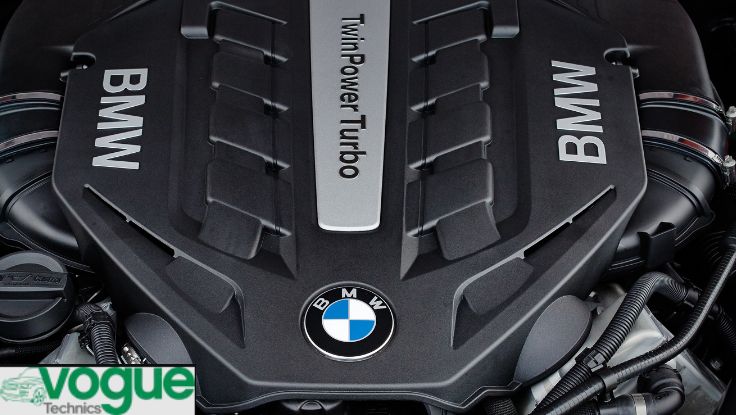A Deep Dive into BMW Engine and Chassis Codes

BMW automobiles are known for their performance, functionality, and luxury because of their superior “Precision Engineering.” However, inside the attractive body and under the powerful hood, there is a more sophisticated system that consists of identification codes. These codes are essential to mechanics, BMW lovers, and anyone who wishes to make the most of their BMW. This post will focus on the BMW engine and chassis codes, how to decode them, and their usefulness. Let’s dive into the world of BMW!
What Are BMW Engine and Chassis Codes?
BMW outlines basic codes for its automobile brand. Among these are the engine and chassis codes, which describe a group of models. The engine code implies the automobile’s content or powerplant, while the chassis code states the required model and its production particulars.
If you have the appropriate code, you can find the necessary parts, get specific technical specifications for the car’s parts or details, or diagnose problems with your BMW’s system. They will forever alter your perspective on work, regardless of whether you are a mechanic or a BMW owner.
Critical Elements of BMW Engine Codes
The BMW engine code is an identification number that combines letters and numbers. This code represents the findings of its underlying features, such as the type of engine, displacement or volume, H.P., etc. Let’s break down the critical elements of a BMW engine code.
- The First Letter(s): Most people can understand the purpose of a single construction or absolute engineering segment from the first two letters in the area of the BMW Company’s operations. The code’s first letter informs the user what type of engine is found in the car. For example, the letter M refers to a highly exclusive, high-performance engine construction. Furthermore, “N” stands for vehicles with newer and better packdowns. This letter “B” or “P” may refer to a specific engine type.
- Numerical Digits: After the opening letter, follow the numerals. The numerical digits explain the engine’s size or displacement in litres. The examples include “N20” (turbo), which is 2.0 litres, while “M54” is 2.5 litres. These digits also assist in selecting the specific machine’s power and torque.
- Suffixed Letters: When the computation program generates specific extensions related to the features that distinguish the quality and varieties of this given engine, it is less likely to formulate finalising letters that bear such a feature. For instance, an “i” can only mean a sub-assembly of an inline engine, while a double “T” can only represent engine turbocharged versions.
Critical Elements of BMW Chassis Codes
Just as engine codes enable you to identify your BMW, chassis codes are just as significant and unique. These codes give information on the model, generation, and type of your vehicle. Chassis codes are usually located on the vehicle identification number plate and can be used to differentiate the various model years, trims, or even production sites.
- The First Three Characters: Generally, the first three characters of the chassis code contain the model series. For instance, E46 refers to the 3 series manufactured between 1997 and 2006, while the F30 pertains to the years of production from 2012 to 2019 of the 3 series. Other series might contain E90 for the 3 Series Sedan or X5 for the Jeep/SUV.
- The Next Two Digits: The next two digits in the chassis code are regarded as the body style. E92 relates to the 3 Series coupe type, while E93 relates to its convertible type. Learning these two digits can assist one in comprehending the body shape and design of the automobile.
- Production Year & Variant: The last portion of the chassis code is likely composed of letters and numbers. It usually represents a vehicle’s production year, trim level, and anything else significant. For instance, the F30 320i, whereas the F30 series was the 3 series.
Important to Understand the Engine and Chassis Codes for BMW Lovers
For BMW lovers, engine and chassis codes are not only technical codes. They indeed recall the history of the brand’s development. Whether you are rebuilding an ancient, long-lost model or tuning up a modern M-series, engine and chassis codes are necessary to engineer optimal performance and make the BMW true to its heritage machine.
What is the Need for BMW Engine Codes and Chassis Codes?
The BMW engine and chassis codes can help you learn more about your vehicle. Below are some reasons to know your BMW’s engine and chassis code.
- Accurate Part Identification
BMW Engine and chassis codes allow you to ensure that the correct parts will be used when your car is being repaired or improved. Understanding that even slight variations in parts will influence performance is essential. Because BMW cars are constructed with precision, utilising the correct code avoids problems related to dissimilar compatibility.
- Simplified Diagnostics
Understanding the nature of the problem is usually one of the biggest hurdles in fixing a car. If a mechanic knows the exact model and engine type, it will usually take him less time to diagnose the problem. He will have a clearer picture of the car’s specifications, making it easier to determine what goes wrong.
- Enhanced Resale Value
A seller may get a higher price for a BMW if he has the engine and chassis numbers of the vehicle. One of the most vital selling points a prospective buyer sees is that the car has been well-kept and its’ parts are in order.
Final Thoughts
BMW engine and chassis codes can be falsely viewed as a complicated array of numbers and letters. However, no matter the person’s excuse, they possess efficient information. Understanding these codes is critical whether you are attempting to troubleshoot a problem, perform maintenance on your vehicle, or just want to know more about it. This blog post discussed everything about the BMW engine and chassis codes.


